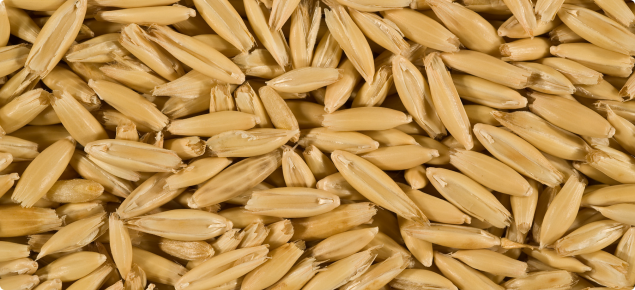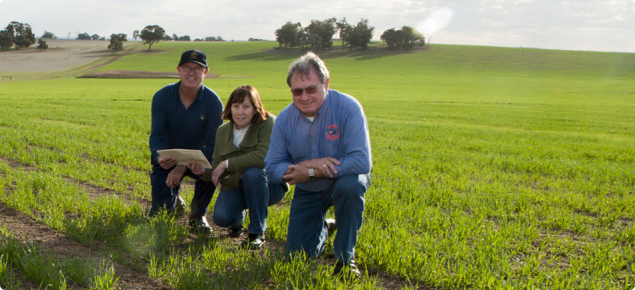Bannister (tested as WAOAT2354) was bred by the National Oat Breeding Program with support from the Department of Primary Industries and Regional Development (DPIRD) and the South Australian Research and Development Institute (SARDI).
Pedigree
Bannister was crossed as 00Q164-21.
Short pedigree: Dumont/Echidna Mortlock // 75Q:198 Swan Fulmark/Newton.
Plant characteristics
- Tall dwarf oat variety similar in height to Wandering. It averages 11cm taller than Kojonup and 5cm shorter than Carrolup.
- Mid season maturity. Similar in heading time to Wandering, three days later than Carrolup and four days earlier than Kojonup.
- More lodging susceptible than Wandering and Kojonup and similar to Carrolup.
- Shattering susceptibility is similar to other dwarf varieties and a marked improvement on the tall variety Carrolup.
- Slower early vigour than Carrolup, Kojonup and Wandering.
Herbicide tolerance
Bannister exhibited yield loss in trials with Tigrex 1 litre per hectare (L/ha) and Diuron 0.5L + MCPA 0.5L/ha applied at label recommended timing (Z13-Z14) in 2011. This was further tested in 2012 to confirm these results which are available on the National Variety Trials website.
Yield
Bannister has excellent grain yield and has been the highest yielding variety in all zones. It has the highest yield potential in medium and high rainfall areas and is similar to Wandering in low rainfall areas.
| Variety | AgZone 2 | AgZone 3 | AgZone 4 | AgZone 5 | AgZone 6 |
|---|---|---|---|---|---|
| Bannister | 4.3 | 4.1 | 2.5 | 3.4 | 4.4 |
| Carrolup | 3.6 | 3.6 | 2.2 | 2.8 | 3.3 |
| Durack | 3.5 | 3.5 | 2.1 | 2.8 | 3.3 |
| Kojonup | 3.7 | 3.6 | 2.3 | 2.9 | 4.0 |
| Kowari | 3.8 | 3.7 | 2.3 | 3.0 | 4.0 |
| Mitika | 3.8 | 3.8 | 2.3 | 3.0 | 3.9 |
| Wandering | 4.3 | 4.0 | 2.7 | 3.5 | 3.8 |
| Williams | 4.2 | 4.2 | 2.3 | 3.3 | 4.1 |
| Yallara | 3.7 | 3.8 | 2.1 | 2.9 | 2.9 |
Quality
Bannister has been approved as a milling quality oat. Its hectolitre weight and grain size are similar to Kojonup and Wandering with lower average screenings percentage. The groat percentage is similar to Carrolup, an improvement compared to Wandering, but lower than Kojonup. B-glucan is lower than Carrloup, Kojonup and Wandering.
| Variety | Hectolitre weight (kg/hl) | 1000 grain weight (g) | Screenings (% 2.0mm) |
|---|---|---|---|
| Bannister | 48.9 | 35.2 | 6.9 |
| Carrolup | 50.5 | 35.0 | 8.4 |
| Durack | 51.5 | 35.6 | 5.8 |
| Kojonup | 47.9 | 35.5 | 6.3 |
| Kowari | 48.7 | 37.0 | 5.0 |
| Mitika | 49.7 | 37.6 | 4.3 |
| Wandering | 47.6 | 35.8 | 6.7 |
| Williams | 48.0 | 33.1 | 9.3 |
| Yallara | 49.9 | 34.9 | 4.9 |
| Variety | NIR protein (%) | NIR oil (%) | NIR groat (%) | Grain brightness | Estimated metabolisable energy (MG/kg dm) | B-glucan (dry basis) | Hull lignin |
|---|---|---|---|---|---|---|---|
| Bannister | 11.1 | 7.1 | 75.1 | 59.1 | 12.0 | 4.3 (3) | High |
| Carrolup | 13.1 | 5.5 | 75.6 | 60.0 | 11.7 | 4.7 (3) | High |
| Kojonup | 13.4 | 5.6 | 78.4 | 60.2 | 12.0 | 5.4 (2) | High |
| Mitika | 12.6 | 6.5 | 75.6 | 58.8 | 12.6 | 5.5 (3) | Low |
| Wandering | 12.3 | 6.2 | 74.2 | 61.7 | 11.6 | 4.9 (3) | High |
| Yallara | 11.6 | 4.6 | 79.3 | 61.3 | 11.7 | 5.1 (3) | High |
| No. Trials | 48 | 42 | 40 | 34 | 15 | - | - |
Disease resistance
Bannister has an improved disease resistance profile compared to the other main oat varieties in WA. It has improved resistance to stem rust, leaf rust and septoria. It is similar to Carrolup and Kojonup for barley yellow dwarf virus (BYDV) resistance and is inferior to Wandering. Its bacterial blight resistance is an improvement over Kojonup (similar to Carrolup and Wandering). Red leather leaf resistance is similar to Kojonup and Wandering and an improvement compared to Carrolup. Bannister is susceptible and intolerant to cereal cyst nematode.
| Variety | Stem rust | Leaf rust | BYDV | Septoria |
|---|---|---|---|---|
| Bannister | R-MR | R | MS | S |
| Williams | MR | R | MR-MS | MS |
| Carrolup | MS | S | MS | S-VS |
| Kojonup | R-MS | S | MS | S-VS |
| Mitika | MR-S | R | S | S-VS |
| Yallara | MR-MS | R | MS | S |
R = resistant, MR = moderately resistant, MS = moderately susceptible, S = susceptible, VS = very susceptible. Rust reactions may vary in different regions depending on the prevailing pathotypes.
Seed availability
Seed is available through the Seednet distribution network.
CBH Grain, partner to the National Oat Breeding Program for Bannister, encourages growers to monitor this exciting new variety in trials throughout the year for agronomic performance and fit for inclusion in their cropping rotation in the near future.
The National Oat Breeding Program
The National Oat Breeding Program is a partnership between:
- Department of Primary Industries and Regional Development
- South Australian Research and Development Institute
- Grains Research and Development Corporation
- Agrifutures
Its mission is to release improved oat varieties for grain or hay production, adapted to Western Australia, South Australia, Victoria and southern New South Wales.


